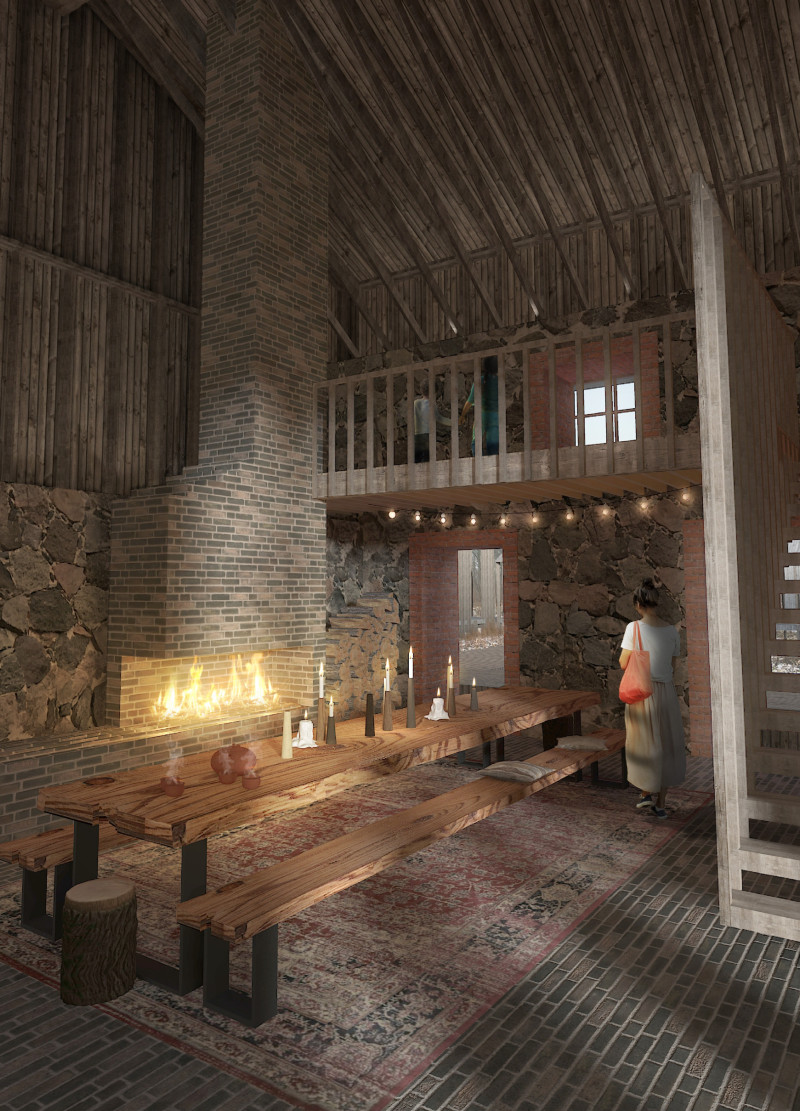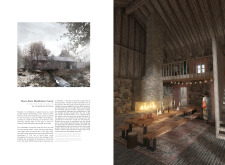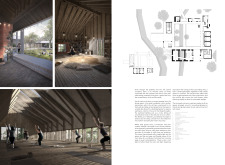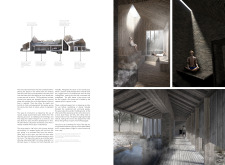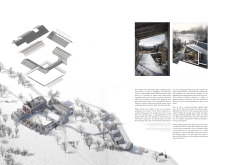5 key facts about this project
### Project Overview
Located in Vaidene, Latvia, the Stone Barn Meditation Camp is designed as a space that nurtures tranquility, community engagement, and a connection to the natural environment. The project integrates traditional architectural forms with contemporary techniques to create a versatile meditation facility that caters to diverse activities such as yoga, workshops, and communal gatherings. The design is characterized by its modularity, allowing for adaptation and evolution in response to changing needs, thereby embedding itself within the rural context.
### Spatial Strategy and User Experience
The spatial organization is characterized by interconnected buildings surrounding a central courtyard, facilitating both social interaction and privacy. Careful attention is paid to transitioning between communal areas and private meditation spaces, encouraging exploration and engagement with both the architecture and the landscape. Functional spaces, including adaptable meditation and yoga rooms, enhance the user experience by accommodating both small and large groups. Additional features such as a sauna and natural pool provide relaxation opportunities, while dining areas promote community through shared meals.
### Materiality and Integration with Nature
The design employs local materials such as wood, brick, and stone to create structures that resonate with the surrounding environment. The use of wood for structural elements and cladding contributes warmth and texture, while brick and stone feature prominently to enhance thermal performance and aesthetic connection to the landscape. Large windows and openings facilitate natural light and provide expansive views, further solidifying the relationship between built structures and the natural setting. Roofs fitted with natural light wells reduce reliance on artificial lighting, emphasizing an ecological approach to design.
The project's modular nature and focus on user experience exemplify a sustainable architectural vision that is both functional and responsive to the evolving needs of the community.


